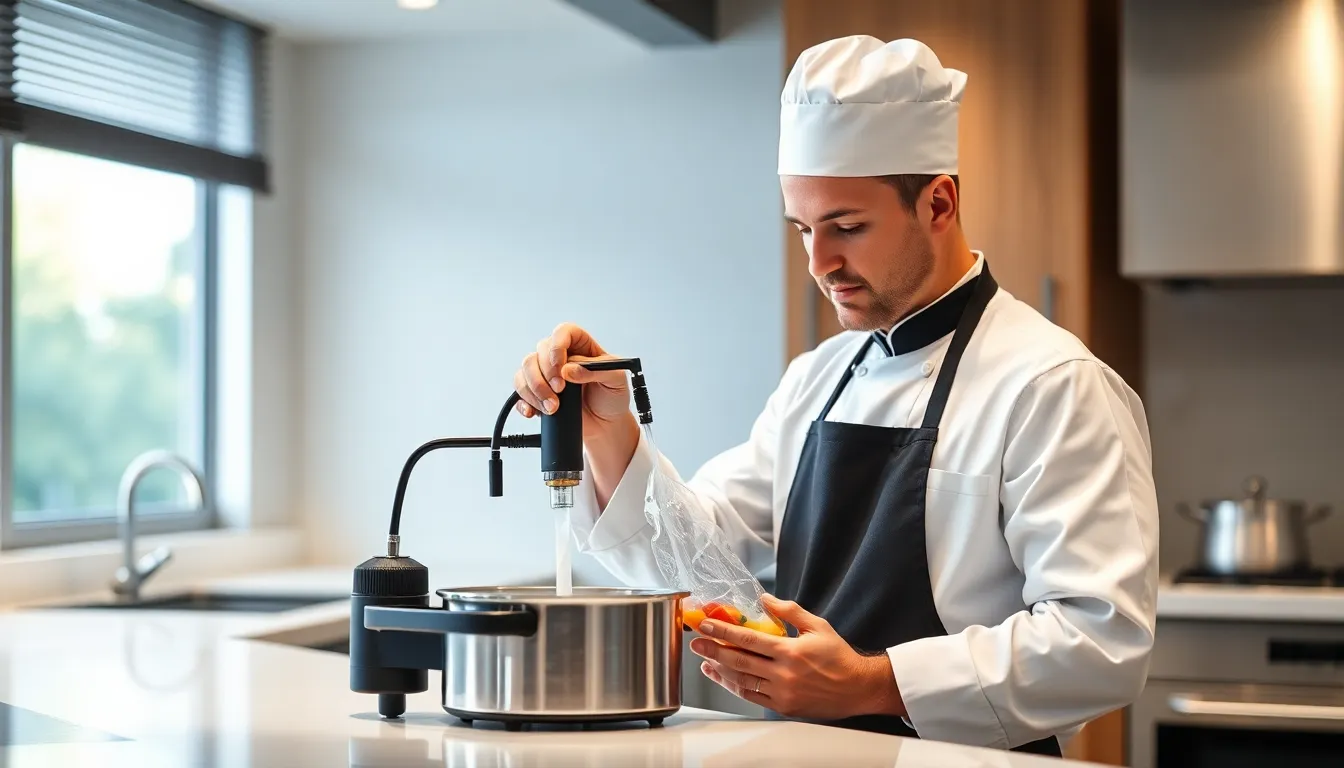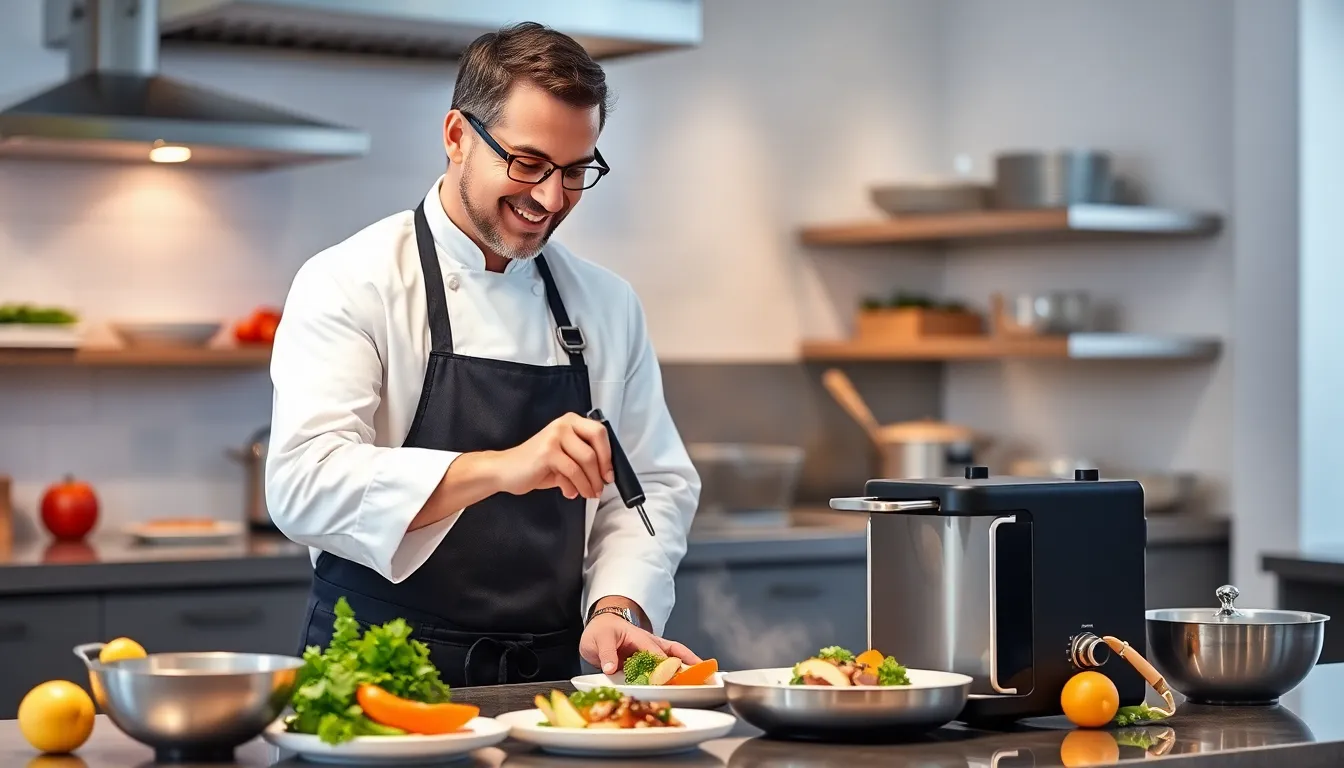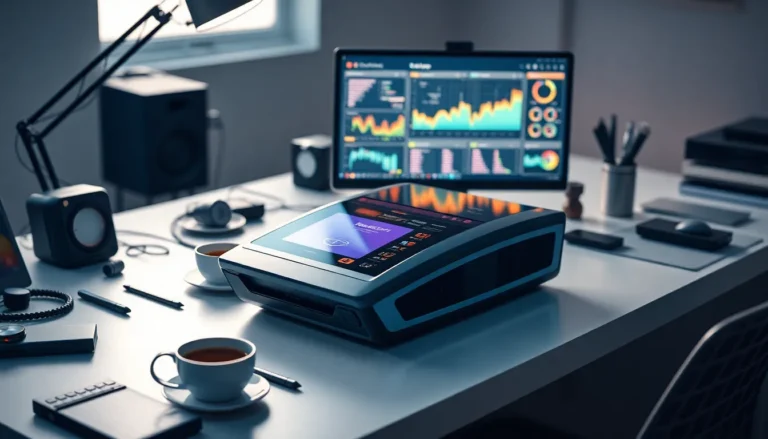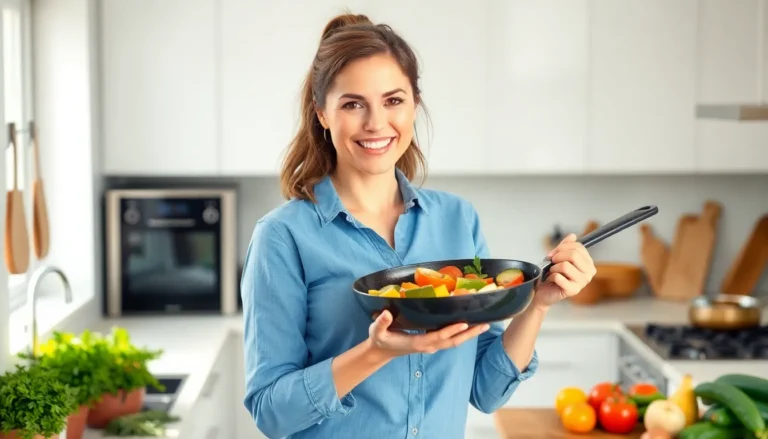In the world of culinary arts, mastering advanced cooking techniques is like unlocking a secret level in a video game. It’s where the magic happens, transforming everyday ingredients into extraordinary dishes that wow friends and family. Whether it’s sous-vide, molecular gastronomy, or mastering the perfect emulsion, these techniques elevate cooking from mundane to magnificent.
Table of Contents
ToggleUnderstanding Advanced Cooking Techniques
Advanced cooking techniques elevate culinary skills beyond basic methods. Techniques such as sous-vide utilize precision temperature control, ensuring even cooking throughout the food. This method retains moisture, enhances flavors, and increases tenderness, making it popular in fine dining.
Molecular gastronomy combines science and culinary art to create innovative textures and flavors. Chefs employ tools like liquid nitrogen or siphons to transform ingredients into foams, gels, or spheres. These transformations surprise diners with unexpected presentations, changing perceptions of traditional dishes.
Perfect emulsions are vital for sauces and dressings, marrying oil and water-based ingredients. Techniques like whisking or blending create smooth, stable mixtures, adding richness and depth to dishes. Mastering emulsion techniques is essential for elevating culinary creations.
Sous-vide, molecular gastronomy, and emulsions are just a few examples of advanced techniques that showcase a chef’s expertise. Each technique opens up new possibilities, allowing for creativity in flavor, presentation, and texture. Expanding culinary knowledge by mastering these methods significantly enhances cooking proficiency.
Exploring advanced techniques requires patience and curiosity. Chefs are encouraged to experiment fearlessly in their kitchens. By doing so, individuals discover unique flavor combinations or innovative presentations that define their culinary style. Embracing advanced cooking techniques inspires creativity and growth in the culinary arts.
Sous Vide Cooking

Sous vide cooking is an advanced technique that involves vacuum-sealing food in a plastic pouch and cooking it in a water bath at a precise temperature. This method ensures consistent results and enhances flavors, delivering exceptional dishes.
Benefits of Sous Vide
Sous vide offers multiple advantages for culinary professionals. Temperature accuracy leads to perfectly cooked proteins, eliminating the risk of overcooking. Moisture retention enhances flavor, resulting in juicy meats and tender vegetables. It allows for meal prep efficiency; chefs can cook dishes in advance and reheat them without sacrificing quality. Moreover, sous vide can infuse flavors effectively by cooking with herbs and spices in the vacuum-sealed bag. Versatile applications extend beyond meats to seafood, eggs, and desserts.
Essential Equipment
Essential equipment for sous vide cooking includes an immersion circulator and vacuum sealer. An immersion circulator keeps water at a stable temperature, providing precision control necessary for optimal cooking results. A vacuum sealer removes air from bags, ensuring efficient heat transfer during cooking. Sous vide bags or approved containers are vital for holding food submerged in water. Additionally, it helps to have a thermometer to monitor water temperature accurately. Investing in quality equipment enhances the sous vide experience and maximizes the benefits of this advanced technique.
Molecular Gastronomy
Molecular gastronomy merges culinary arts and scientific principles to create innovative dining experiences. Chefs utilize techniques that manipulate ingredients at the molecular level, transforming textures and flavors.
Key Concepts in Molecular Gastronomy
Key concepts include spherification, which creates liquid-filled spheres; emulsification, the blending of liquids that normally don’t mix; and foaming, which introduces air into liquids to create flavorful foams. These methods enhance presentation and palatability. The process often involves using food-grade chemicals, like sodium alginate and calcium chloride, to achieve desired effects. Chefs can also leverage temperature manipulation to create unique textures, such as freeze-drying fruits or flash-freezing with liquid nitrogen. Understanding the science behind these concepts empowers chefs to push culinary boundaries while enhancing the overall dining experience.
Tools and Ingredients
Essential tools include precision scales for accurate measurements, immersion circulators for sous-vide cooking, and whipping siphons for creating foams. He uses siphons to craft airy toppings with various flavors. Common ingredients feature agar-agar for gelling, lecithin for emulsifying, and maltodextrin for transforming liquids into powders. Using these ingredients effectively allows chefs to play with textures and tastes creatively. Acquiring quality tools and ingredients enriches experimentation, ensuring each dish showcases the transformative potential of molecular gastronomy.
French Techniques
French cooking techniques form the backbone of many advanced culinary skills. Known for their precision and care, these methods enhance the overall cooking experience and produce exceptional meals.
Classic French Methods
Classic French methods include techniques such as sautéing, poaching, and braising. These foundational skills create rich flavors and textures in dishes. Sautéing requires cooking food quickly in a small amount of fat over high heat, achieving a beautiful caramelization. Poaching involves gently cooking food in simmering liquid, resulting in tender, delicate outcomes, especially with proteins like fish and eggs. Braising combines slow cooking and moisture, transforming tough cuts of meat into succulently soft dishes. Mastering these classic techniques empowers chefs to build a stronger culinary repertoire.
Modern Adaptations
Modern adaptations of French techniques showcase innovation in the kitchen. Chefs incorporate elements like deconstruction and plate presentations influenced by contemporary aesthetics. Modern sous-vide applications stem from traditional French cooking, allowing precision in temperature control while enhancing flavors. New techniques such as foam emulsifications add a twist to classic sauces and soups, delivering unique sensory experiences. Experimenting with these adaptations leads to innovative dishes that resonate with today’s diners, merging tradition with creativity. Embracing modern interpretations elevates classic French cuisine into contemporary culinary landscapes.
Smoking and Infusing
Smoking and infusing enhance flavors in cooking. Both techniques bring depth to dishes, adding aromatic complexity.
Techniques for Smoking
Cold smoking and hot smoking serve different purposes. Cold smoking does not cook food but infuses it with flavor. Ingredients like cheese and fish benefit from this method, absorbing the smoke’s nuances. Hot smoking cooks food simultaneously, creating tender and flavorful results. Meats and vegetables excel when subjected to this technique. Various wood types such as hickory, mesquite, and applewood impart distinctive flavors, allowing chefs to tailor the smoke’s profile to the dish. An electric or stovetop smoker facilitates the process, ensuring consistent results and easy implementation of smoking techniques.
Infusion Methods
Infusing flavors into oils, vinegars, and spirits elevates dishes. Infusion techniques vary, with methods like cold infusion and heat infusion. Cold infusion steeps ingredients in liquids, creating a subtle flavor over time. This method works well with herbs and spices, transferring their essence. Heat infusion involves gently warming the liquid, speeding up the process and intensifying flavors. Chefs often utilize this method for oils, producing aromatic infusions that enhance dressings and marinades. Both techniques provide versatility, enabling creativity in flavor development and experimentation in diverse culinary applications.
Mastering advanced cooking techniques opens a world of culinary possibilities. Chefs can transform simple ingredients into remarkable dishes that captivate the senses. Whether it’s the precision of sous-vide cooking or the creativity of molecular gastronomy, these methods enhance both flavor and presentation.
Embracing these techniques not only elevates a chef’s skills but also encourages experimentation and innovation. The journey through advanced cooking is about pushing boundaries and discovering new culinary horizons. As chefs refine their craft, they create memorable dining experiences that leave a lasting impression on diners. The culinary landscape is ever-evolving, and those who dare to explore will always find new ways to inspire and delight.




